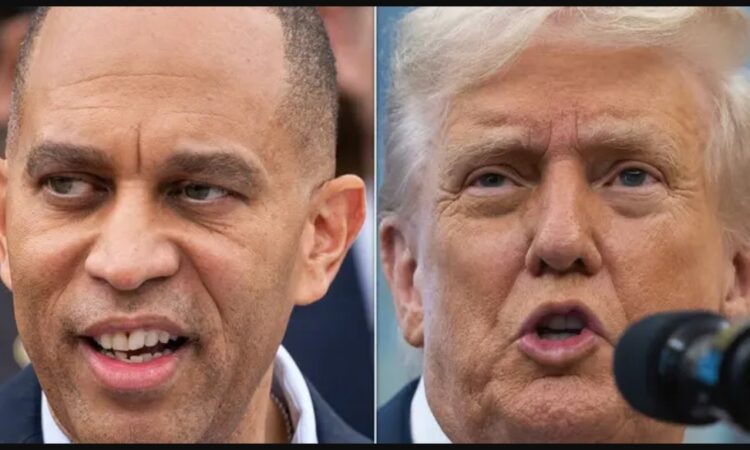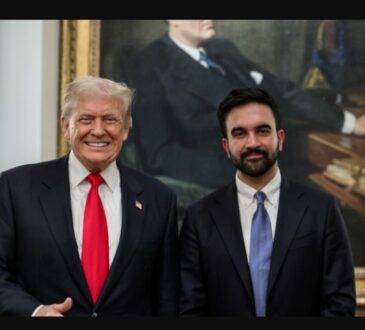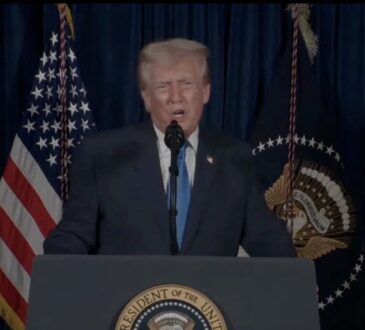
House Minority Leader Hakeem Jeffries was deeply angered by President Donald Trump after the president mocked Democrats in the aftermath of failed talks meant to stop the government from shutting down. What especially set Jeffries off was a video that Trump shared online. The video was created using artificial intelligence, but instead of presenting facts or arguments, it twisted reality and turned into a cruel joke at the expense of Jeffries and Senate Minority Leader Chuck Schumer.
The meeting at the White House on Monday had been important. Democrats and Republicans were supposed to work toward a compromise to keep the government funded and avoid disruptions that affect millions of Americans. But the meeting ended without a deal. Instead of continuing negotiations or offering another path forward, Trump chose to mock the Democrats afterward. He targeted them not just with words, but with a manipulated video designed to humiliate.
In this video, Jeffries was digitally altered to appear in a sombrero and a thick mustache while mariachi music played in the background, a stereotypical and racially charged caricature of Mexican culture. Schumer’s remarks from the press conference were also faked. The altered audio replaced his real statements with insulting lines that claimed Democrats were unpopular because of “woke, trans nonsense” and went on to suggest that Democrats planned to secure votes from undocumented immigrants by offering them free health care. The video leaned heavily on false Republican talking points and exaggerated stereotypes, all in a way meant to ridicule rather than engage.
For Jeffries, this crossed a line. He was outraged not only because of the racist imagery but also because of how dangerous and misleading AI-generated content can be when it is used to spread lies. On Tuesday, standing on the steps of the Capitol and speaking to the press, he called Trump out directly. He said the president had shown cowardice by hiding behind a fake video instead of addressing him honestly. “Mr. President, the next time you have something to say about me, don’t hide behind a racist and fake AI video. When I’m back in the Oval Office, say it to my face. Say it to my face.” His repetition emphasized both his anger and his challenge, showing he wasn’t afraid of a direct confrontation.
The exchange highlighted the growing role of manipulated media in politics, where jokes and fake clips can spread faster than facts. For Democrats, it also reinforced how Trump often chooses to attack opponents personally rather than engage in serious policy discussions. For Republicans, it was another example of Trump’s style of rallying his base by mocking his rivals rather than focusing on compromise.
When reporters asked Trump about the incident later, he chose not to mention Jeffries at all. Instead, he described his conversation with Schumer as “very good” and even referred to Schumer as a “very nice gentleman.” By leaving Jeffries’ name out, Trump appeared to dismiss him entirely, as if trying to show that Jeffries’ outrage didn’t matter. Trump then said only that he would “see what happens” when it came to working with Democrats on a deal, offering no clear plan or commitment to solving the shutdown crisis.
This back-and-forth captured a larger picture of the current political moment: Democrats trying to present themselves as serious negotiators seeking to protect the public from a government shutdown, while Trump used ridicule and spectacle to maintain control of the conversation. Jeffries’ anger showed how offensive and damaging these tactics can be, not only to the individuals targeted but also to the political process itself.




